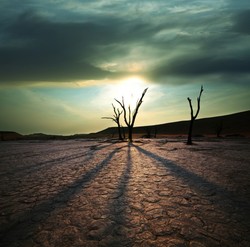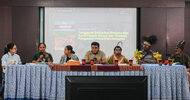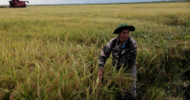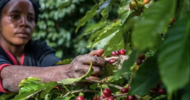Reuters | 19 January 2021
By Rina Chandran
Feeding the world while saving the planet a 'difficult' balancing act
By Rina Chandran
BANGKOK (Thomson Reuters Foundation) - Converting large areas of land for farming to boost food supplies increases planet-heating emissions and places a greater burden on poorer nations already bearing the brunt of climate change, researchers warned on Tuesday.
A study led by Arizona State University (ASU) analysed about 1,500 large land deals totalling 37 million hectares (91 million acres) - across Southeast Asia, Latin America, Africa and eastern Europe - showed that clearing the land for farming may have emitted about 2.3 gigatonnes of carbon emissions.
With regulations to limit land conversion or to protect forests, emissions could have been reduced to 0.8 gigatonnes, according to the study, published this month in the journal Nature Food.
“It’s unrealistic to say that we can’t convert more land, given that the world’s population is growing, especially in developing countries,” said Chuan Liao, assistant professor in ASU’s School of Sustainability and the study’s lead author.
“But we still must minimise carbon emissions while pursuing agricultural development,” he said.
A sharp increase in food prices in 2007 triggered a global rush for land to increase food security, with wealthier nations and multinational businesses snapping up land in poorer nations.
Worldwide, land is increasingly concentrated in fewer hands, mainly those of large agriculture businesses and investors, with the largest 1% of farms operating more than 70% of the world’s farmland, according to a 2020 study.
While the socio-economic consequences of such deals have been apparent - including threats to the livelihoods of smallholder farmers - regulations to limit environmental damage are rare, as the goal is to boost food output, Liao said.
“Enforcing environmental policies does not reduce the amount of land that can be used for agricultural development,” he said.
“Yet it is difficult, given the host-country governments are so keen to catch up through agricultural development,” he told the Thomson Reuters Foundation.
So it is best to balance the two needs by allowing agricultural development on lands with lower carbon values or low forest cover, and by revitalising abandoned farmlands to generate lower carbon emissions, he said.
Carbon dioxide is the main greenhouse gas responsible for rising temperatures. Total 2019 emissions of carbon dioxide equivalent (GtCO2e) hit a record 59.1 gigatonnes, according to United Nations data.
Agriculture and deforestation account for nearly a quarter of greenhouse gas emissions globally - greater than the share of the transport sector.
The coronavirus pandemic has brought into sharp focus the impacts of rapid urbanisation and deforestation, which have also contributed to the spread of infectious diseases.
Last week, green group WWF said that the world has lost tropical forest equivalent to the size of California over a 13-year period to 2017, with commercial agriculture the leading cause of deforestation.
To meet growing food demand, it is necessary to raise output on existing croplands, and enforce laws to limit land conversion to “protect high-carbon-value forests while permitting agricultural development on low-carbon value land”, Liao said.
“The pandemic makes both conservation and food security more urgent,” he added.













